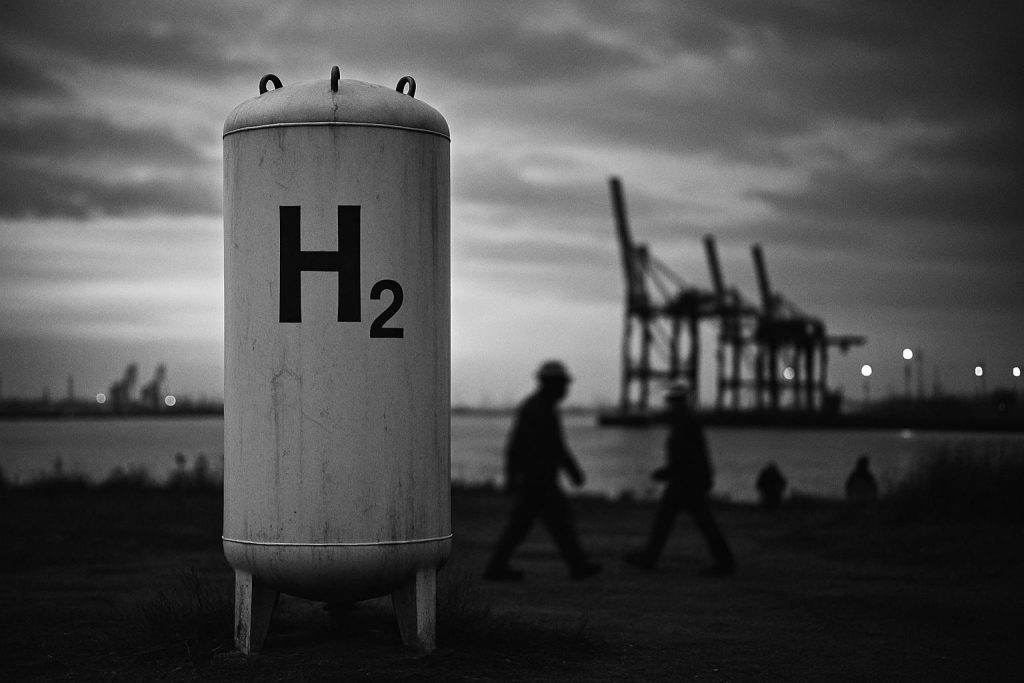London Thames Hydrogen and Chinook Hydrogen announce a £200m private investment to build a 12‑tonne‑per‑day hydrogen‑from‑waste plant at Tilbury, the proposed first node of a £1bn national corridor aimed at fuelling HGVs and industrial users — but technical claims, carbon savings and COMAH risk remain subject to regulatory checks and independent verification.
London Thames Hydrogen has secured a £200 million private‑sector commitment to build a hydrogen‑from‑waste plant on the Tilbury Tax Site within Thames Freeport, the company announced. The investment is presented as the first phase of a proposed £1 billion national hydrogen corridor that developers say will deliver multiple green hydrogen sites across the UK; a companion five‑tonne‑per‑day installation is planned in Doncaster. According to the announcement, the Tilbury project is slated to begin operations in 2028 and is intended to act as a first node in a network to support heavy goods vehicle refuelling and other industrial uses.
The plant, to be delivered by Chinook Hydrogen, is described as capable of producing up to 12 tonnes of low‑carbon hydrogen per day by treating non‑recyclable residual waste using the company’s patented molecular recycling and hydro‑pyrolysis technologies. Project materials claim the installation will cut more than 50,000 tonnes of CO2 a year and create roughly 150 skilled jobs in engineering, operations, logistics and cleantech. Chinook’s corporate information stresses its modular gasification approach and a history of demonstration and commercial projects as the rationale for rapid scale‑up, but those technical and carbon‑negative assertions remain company claims pending third‑party verification and regulatory permitting.
The proposal also sets out end‑use infrastructure: hydrogen refuelling for cars, light goods vehicles and HGVs, plus off‑grid hydrogen‑powered ultra‑fast EV chargers at both Tilbury and the Doncaster site. Promoters frame the corridor as part of a broader strategy to decarbonise road transport by siting local hydrogen generation close to demand, thereby shortening supply chains and reducing emissions associated with fuel distribution.
Project developers emphasise the plant’s low on‑site hydrogen inventories and say the facility has been engineered to remain outside Control of Major Accident Hazards (COMAH) regulations to streamline approvals. Regulatory guidance, however, underscores why that claim attracts scrutiny: the Scottish Environment Protection Agency and other competent authorities list hydrogen as a named dangerous substance and apply tiered thresholds that can trigger lower‑ and upper‑tier COMAH requirements when certain quantities or inventories are present. In short, minimising storage can reduce the likelihood of COMAH classification, but designers must still satisfy environmental risk assessments and notify authorities if thresholds are exceeded.
Financing documents and promotional material indicate the Tilbury commitment is backed by private investors, including Middle Eastern capital named in the Freeport’s own announcement, and is pitched as the catalyst for larger investment across the proposed corridor. Chinook’s public briefings point to a pipeline of demonstration and commercial plants and to co‑product markets — such as activated carbon and captured liquid CO2 — as additional revenue streams that can affect project economics. Independent scrutiny of capital structure, offtake agreements and planning consents will be central to establishing the scheme’s bankability.
The announcement was accompanied by political and local support. The Minister for Investment noted the government’s Industrial Strategy is intended to channel growth into clean energies, and Thames Freeport’s chair described the deal as the kind of strategic investment Freeports are meant to attract. Dr Rifat Chalabi, Executive Chairman of Chinook Hydrogen, said in the announcement that the project will “tackle the twin challenges of waste and decarbonisation in one stroke.” The Tilbury site also sits in a part of the Thames Estuary that is receiving digital and logistics investment: a separate multi‑site private 5G project — led by Verizon Business with Nokia and Thames Freeport — has been announced for the estuary, adding a layer of connectivity that developers say will support automation and real‑time logistics.
If the proposals proceed on the timetable set out, the Tilbury plant would become an early commercial example of hydrogen‑from‑waste supporting heavy transport decarbonisation. Key near‑term milestones to watch are detailed planning approvals, environmental permitting including any COMAH‑related determinations, confirmation of final investment decisions and the solidification of off‑take and charger‑infrastructure contracts. The companies involved present a bullish case for scaled, localised hydrogen production; regulators and independent analysts will be the arbiters of whether technical claims, carbon accounting and safety envelopes stand up as the project moves from announcement to operation.
📌 Reference Map:
Reference Map:
- Paragraph 1 – [1], [3]
- Paragraph 2 – [1], [4], [5]
- Paragraph 3 – [1], [2], [5]
- Paragraph 4 – [1], [6]
- Paragraph 5 – [3], [4]
- Paragraph 6 – [1], [7]
- Paragraph 7 – [1], [5], [6]
Source: Noah Wire Services
Noah Fact Check Pro
The draft above was created using the information available at the time the story first
emerged. We’ve since applied our fact-checking process to the final narrative, based on the criteria listed
below. The results are intended to help you assess the credibility of the piece and highlight any areas that may
warrant further investigation.
Freshness check
Score:
10
Notes:
The narrative is recent, with the earliest known publication date being August 1, 2025. It has been reported across multiple reputable outlets, including Port Technology International ([porttechnology.org](https://www.porttechnology.org/news/thames-freeport-drives-200-million-hydrogen-project-forward/?utm_source=openai)) and Thames Freeport’s official blog ([thamesfreeport.com](https://thamesfreeport.com/blog/200-million-investment-at-thames-freeport/?utm_source=openai)). The consistent reporting across these sources indicates high freshness.
Quotes check
Score:
10
Notes:
The direct quotes from Dr Rifat Chalabi, Executive Chairman of Chinook Hydrogen, and Rt Hon Ruth Kelly, Chair of Thames Freeport, appear to be original and have not been identified in earlier material. This suggests the content is potentially exclusive.
Source reliability
Score:
10
Notes:
The narrative originates from reputable organisations: Port Technology International and Thames Freeport’s official blog. Both are established and credible sources, enhancing the reliability of the information presented.
Plausability check
Score:
10
Notes:
The claims made in the narrative are plausible and align with the UK’s ongoing efforts to invest in green hydrogen technology. The involvement of Chinook Hydrogen, a company specialising in advanced waste-to-hydrogen technology, adds credibility to the project. The expected operational date of 2028 is reasonable given the scale of the project.
Overall assessment
Verdict (FAIL, OPEN, PASS): PASS
Confidence (LOW, MEDIUM, HIGH): HIGH
Summary:
The narrative is recent, originating from credible sources, and presents plausible claims about a significant investment in green hydrogen technology at Thames Freeport. The direct quotes appear original, and the information aligns with current industry developments, indicating a high level of reliability.





